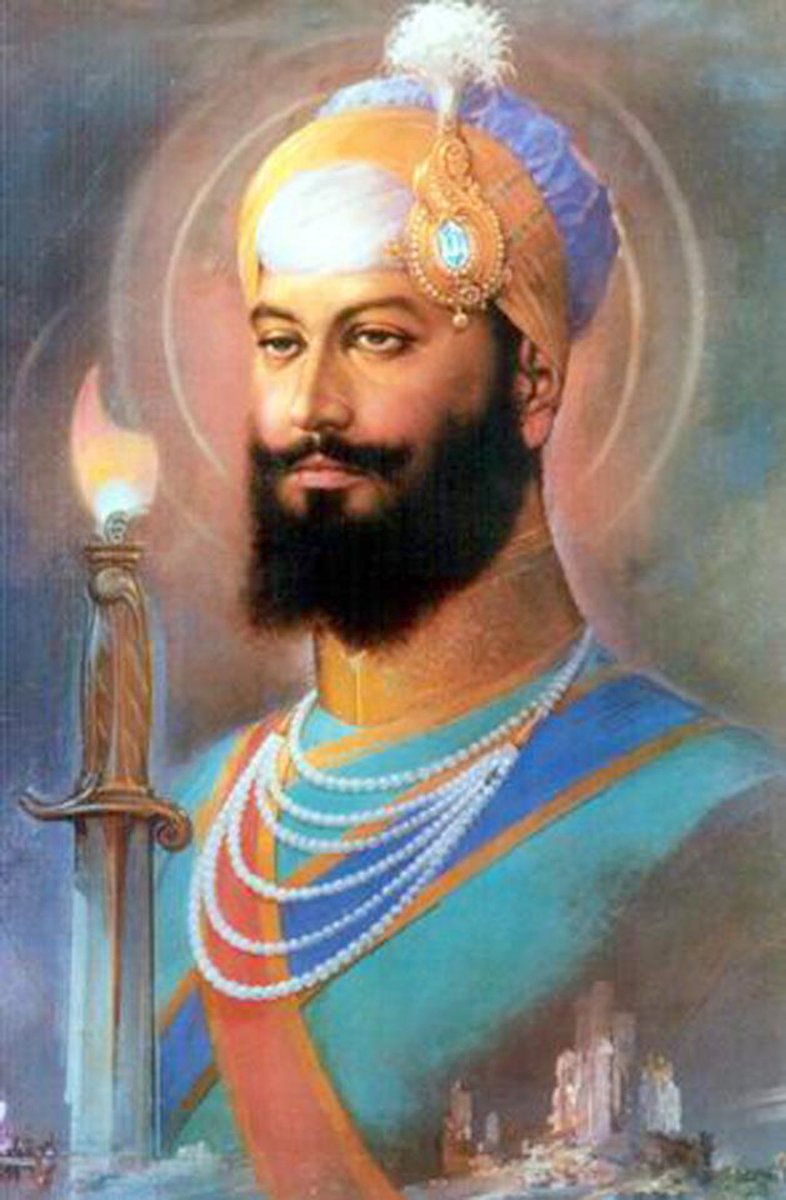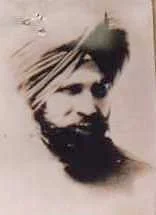SatGuru Bandhi Chhorr Hai
/SatGuru Bandhi Chhorr Hai - Guru, Who Speaks and Acts in Truth, is the Emancipator and Liberator.
ਗੁਰ ਬਿਨੁ ਕਿਨਿ ਸਮਝਾਈਐ ਮਨੁ ਰਾਜਾ ਸੁਲਤਾਨ ॥ ੪ ॥
Who other than the Guru will explain that within the mind resides The Ruler, The Emperor.
ਪ੍ਰੇਮ ਪਦਾਰਥੁ ਪਾਈਐ ਗੁਰਮੁਖਿ ਤਤੁ ਵੀਚਾਰੁ ॥
The great treasure of Love is obtained when the Gurmukh contemplates the essence of reality.
Bandhi Chhor Divas celebrates deeply held Sikh beliefs, our love for humanity (Pyaar), sovereignty (Raj), true social justice (Niaou), challenging and seeking to destroy all oppressive power dynamics and being awake to the realities that we live in (Dharam).
Dhan Sri Guru HarGobind Sahib Ji (the title given by Sikhs to their Guru, the Gurus were revered as spiritual teachers, as warriors, poets, emancipators, and as sovereign rulers) became the 6th Guru after his father, Dhan Sri Guru Arjan Dev Ji become the first Sikh Shaheed (martyr). Becoming the Guru at the age of 11 Dhan Sri Guru HarGobind Sahib Ji built on the foundation laid by previous Gurus. Guru Ji kept 700 horses (many of which were originally purchased by Dhan Sri Guru Arjun Dev ji), 300 trained horsemen and 60 musketeers. Thus Guru Ji furthered the training of the Sikhs to become masters of their minds and bodies.
Dhan Sri Guru HarGobind Sahib Ji was imprisoned at the age of 14 in 1609 because he accepted the sovereignty of none other than ਅਕਾਲ (Akāl: That Creator that is beyond death and time). Guru Ji established the ਅਕਾਲ ਤਖਤ (Akāl Takht: the Throne/Fortress of Akāl) in 1606, and wore the Two Swords of ਮੀਰੀਪੀਰੀ (MiriPiri: Interwoven temporal/metaphysical/spiritual realities bound to perceptions/experiences of reality itself through the ਕਿਰਪਾਨ: Kirpān of the Khalsa), to make it known to the world forever, that the Sikhs are sovereign and will never be subjugated by any worldly power. This spirit of Sikh sovereignty underpins Sikh being. It was first taught to us by Dhan Sri Guru Nanak Dev Ji who was born in 1469. Dhan Sri Guru Hargobind Sahib Ji was released from Gwalior Fort in 1611/12 depending on the accounts, with the Khalsa formally established in 1699.
Sikh Itīhās (history, oral and written) is long, it is an inter-woven tapestry from which we continually draw from and are reminded of our values and philosophies, it contains our collective memories. For a Sikh therefore, one moment of Itīhās is not isolated from another. Everything we do as Sikhs, as human beings, in our personal and civic lives, is inspired by the Guru, this is expressed by Sikhs as a central self-defining concept in their native Gurmukhi as ਗੁਰਸਿੱਖੀਜੀਵਨ (GurSikhi Jīvan: life, existence, being, mode of living as a Sikh). Dhan Sri Guru HarGobind Sahib Ji's GurSikhi Jīvan, and the Jīvan of the Gurus, Shaheeds, and GurSikhs throughout time forms an interwoven tapestry that becomes Sikh Itīhās. Our beloved Gurus made great sacrifices as did their families and generations of Sikh Shaheeds so that our unique voice is heard, Sikh values continually strived for and we as a Quam (Sovereign Sikhs of a Sovereign Guru) remain existent. We are as much a part of that tapestry spending across time as the first Sikh.
The primary source for Sikh thought, vision and guidance remains the current Guru; Sacheh Pathshah Dhan Sri Guru Granth Sahib Ji Maharaj, and as Sovereign Sikhs in Sangat of the Sovereign Guru we are on our journey to actually live Sikhi, and strive to build our GurSikhi Jīvan with the ਕਿਰਪਾ (Kirpā: kindness, benefaction, grace, love) of the Guru.
Sikh philosophy teaches us that power should be transparent, decentralised, visible and step down from notions of authority to humbly, humanely, and directly engage with the people it claims to serve so that collectively we can serve the greatest value of humanity: Love. This is shown in the life of Dhan Sri Guru HarGobind Sahib Ji, and the Jīvan of the Gurus, Shaheeds and Sikhs that came before and after, and continues to be a driving aspiration for every Sikh organisation and charity today.
Dhan Sri Guru HarGobind Sahib Ji was imprisoned for refusing to accept the authority of the Mughal Empire and its then Emperor Jahangir. By the Gurus own sovereign judgement the Mughal Empire was deemed unfit to exercise authority over the minds and bodies of the people, and Dhan Sri Guru HarGobind Sahib Ji made sure to constantly remind the Mughal emperor that his authority was unfounded, insignificant, and irrelevant when compared to the authority of the source of true authority; Akāl.
Sikhs of the 6th Guru liberated cities from the Mughal emperor, renamed them after their Guru, captured the emperors prized falcon, raised battle standards of the sovereign Guru, and gathered armed and defiant at Akāl Takht. The Sikhs of the Guru fed and armed the poor and oppressed, started wars and instigated open rebellion, they completely rejected the authority of the oppressive regime of the day, this frame of mind has inspired generations of Sikhs to place absolute faith and trust in the values of their Guru alone, above all other values of priests, holy men, kings, emperors, colonisers or any other worldly rulers. Only the Guru showed respect and love to all, giving us Langar, teaching Sikhs that the supreme value of all is Love and we are only subordinate to the power that created Creation, Love, Death and Life: Akāl.
Today hundreds of Sikh political prisoners still languish in jails in the colonial project that is 'india' spending years awaiting trials, mistreated because they too reject the authority of an oppressive regime. These GurSikhs place absolute faith in the teachings of their Guru and submit to only one authority; Akāl. Like their Guru the GurSikhs that are in jail today strive for a world where the values of humanity and love can flourish. This is what Khalistan has meant and continues to mean to Sikhs, a dream for a present where Sikhs can begin to determine their own destiny with the guidance and authority of none other than Akāl and their beloved Guru.
Today when you light the diva and set the fireworks off, light your spirit on fire too, break all worldly bonds and grab hold of the Gurus cloak. The True Sovereign. Dare yourself to believe so much in your Guru that you want a whole world where the values taught to Sikhs by their beloved Gurus can uplift, inspire, and empower the most disenfranchised, the “lowest of the low”, the sick, the poor, the hungry, this is what “Raj Karehga Khalsa” has always been about, and we strive for it through Khalistan.
ਖਰੇ ਖਰੋੲੇ ਬੈਠਤ ੳੂਠਤ ਮਾਰਿਗ ਪੰਿਥ ਿਧਅਾਵੈਗੋ ॥
ਸਿਤਗੁਰ ਬਚਨ ਬਚਨ ਹੈ ਸਿਤਗੁਰ ਪਾਧਰੁ ਮੁਕਿਤ ਜਨਾਵੈਗੋ ॥੫॥
Standing idle, sitting down, getting up, focus/meditate on the way of the Panth.
The word that is given is that of Satguru and the word of Satguru is as Satguru, the way to emancipation is revealed.
ਸਾਸਿਨ ਸਾਿਸ ਸਾਿਸ ਬਲੁ ਪਾੲੀ ਹੈ ਿਨਹਸਾਸਿਨ ਨਾਮੁ ਿਧਅਾਵੈਗੋ ॥
ਗੁਰਪਰਸਾਦੀ ਹੳੁਮੈ ਬੂਝੈ ਤੌ ਗੁਰਮਿਤ ਨਾਿਮ ਸਮਾਵੈਗੋ ॥੬॥
Each breath gives strength, with the Gurus training, the aim is taken for the target of Naam.
With the Gurus grace, ego is understood, it is silenced, and one is merged into Gurmat Naam.
As emphasised above within a Sikh context Bandhi Chor Divas is not just a celebration of one moment, but rather a reminder of the values with which we must constantly live as Sikhs. An exploration of the Vār that will be recited at every Gurdwaras on the evening of Bandhi Chhorr Divas that I liked.





